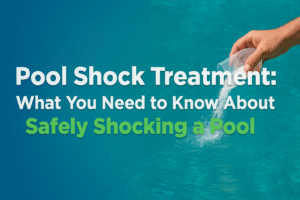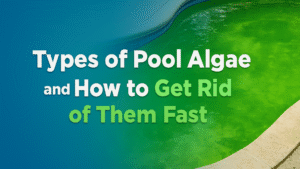Every pool owner ponders two crucial questions: when to schedule pool refinishing and which interior finish can withstand the demanding South Florida environment. This guide provides clear timelines, typical lifespan expectations, and material comparisons to help you plan your pool resurfacing with complete confidence. We’ll begin by explaining what pool resurfacing entails and the ideal times for renewal, then delve into longevity charts and signs of wear, compare plaster, aggregate, fiberglass, tile, and epoxy finishes in detail, and conclude with tips for choosing the best option and insights into cost versus return on investment for South Florida homeowners.
When Should You Resurface Your Pool? Key Factors and Timelines
What Exactly Is Pool Resurfacing and Why Is It Essential?
Pool resurfacing is vital for restoring the protective layer on your concrete, gunite, or plaster pool shell. This process maintains structural integrity, prevents leaks, and revitalizes the pool’s appearance. Neglected or aging surfaces can develop tiny cracks, rough spots, and unsightly stains, which lead to increased water loss and chemical imbalances. For instance, a pool replastered after seven years might reveal hairline cracks that, if ignored, could result in expensive repairs or even necessitate a complete shell replacement.
How Long Do Different Pool Surfaces Typically Endure?
The lifespan of a pool surface depends on the finish type, how well it’s maintained, and the climate it’s exposed to. The table below offers average lifespans and the upkeep required for common materials.
| Finish Type | Average Lifespan | Maintenance Level |
|---|---|---|
| Traditional Plaster | 5–10 years | Moderate |
| Pebble Aggregate | 15–20 years | Low |
| Quartz Aggregate | 15–25 years | Low |
| Fiberglass Gelcoat | 10–20 years | Low |
| Ceramic/Glass Tile | 20+ years | Low |
| Epoxy Paint | 3–7 years | High |
Industry insights and expert opinions indicate that traditional plaster pool finishes typically last between 5 to 10 years, with many showing significant wear by the 5-7 year mark. More robust options like pebble aggregate finishes can extend longevity to 15-20 years, while quartz aggregate finishes generally provide a lifespan of 12-18 years.
These lifespan benchmarks help you anticipate when resurfacing will be needed and align your pool care schedule with our expert pool resurfacing services.
What Are the Common Signs Your Pool Needs Resurfacing?
Your pool will show signs of surface distress, including:
- Cracks and chips — these indicate that the plaster is starting to delaminate.
- A rough or abrasive texture — this can be uncomfortable for swimmers and puts extra strain on your filter system.
- Persistent stains and discoloration — these often point to chemical damage or pores within the finish.
- Ongoing algae problems — rough surfaces can harbor organic growth, making cleaning difficult.
- Noticeable water leaks — indicated by low water levels or damp areas around the pool’s edge.
If you observe any of these warning signs, it’s time to schedule a thorough inspection and plan for a renewal.
How Does South Florida’s Climate Affect How Often You Need Resurfacing?
The intense UV rays, high humidity, and aggressive pool chemistry common in South Florida can speed up the fading and erosion of pool surfaces. Constant sun exposure degrades cementitious finishes more quickly, and frequent acid washing can intensify etching on rough textures. Homeowners should plan for resurfacing at the earlier end of the typical lifespan ranges, often every 5–7 years for plaster, to prevent premature wear and tear.
Which Pool Resurfacing Materials Offer the Longest Lifespan? A Detailed Comparison

What Are the Advantages and Disadvantages of Plaster Pool Finishes?
Traditional plaster offers a smooth, seamless interior at a more accessible starting price point ($4–$8 per sq ft). It enhances the pool’s brightness and creates a uniform look but typically needs to be reapplied every 5–10 years. Plaster can develop hairline cracks under intense sun exposure and requires careful chemical balancing to prevent calcium scaling.
How Resilient Are Aggregate Finishes Like Pebble Tec and Quartz?
Aggregate finishes incorporate natural or engineered pebbles into plaster, creating a highly durable, nonporous surface that generally lasts longer than standard plaster.
What Makes Pebble Tec Finishes a Durable Long-Term Choice?
Pebble Tec combines smooth river pebbles with a polymer-modified cement base, delivering exceptional resistance to chipping and vibrant color retention. Its textured surface resists etching and remains slip-resistant for 15–20 years with minimal maintenance.
How Does Quartz Compare in Durability and Aesthetics?
Quartz aggregate uses refined quartz granules within a durable matrix, providing a smooth feel and enhanced brilliance. Quartz finishes typically last 15–25 years, offering slightly brighter colors and finer textures than pebble without compromising on toughness.
What Are the Benefits and Lifespan of Fiberglass Pool Coatings?
Fiberglass gelcoat creates a factory-applied, impermeable shell that bonds directly to the concrete or gunite interior. It provides a sleek, nonporous finish that resists stains and algae growth, lasting between 10–20 years. Minor scratches can be easily buffed out or spot-repaired, reducing the need for full resurfacing.
How Long Do Tile and Glass Tile Finishes Typically Last?
Tile systems—whether ceramic, porcelain, or glass—offer the longest lifespan, exceeding 20 years. Individual tiles can be replaced easily, and intricate mosaic designs add a touch of luxury. Tile installations come with a higher initial cost ($20–$30 per sq ft) but prove cost-effective over time due to virtually no surface erosion.
Is Epoxy Paint a Budget-Friendly Option with a Shorter Lifespan?
Epoxy pool paint is applied in thin layers over concrete, creating a smooth, colorful shell for $3–$6 per sq ft. While it’s a budget-friendly choice initially, epoxy paint typically requires recoating every 3–7 years due to peeling and chalking under UV exposure. Frequent touch-ups can increase the overall maintenance demands over time.
| Material | Lifespan | Initial Cost | Maintenance | Pros | Cons |
|---|---|---|---|---|---|
| Plaster | 5–10 years | $4–$8/sq ft | Moderate | Smooth feel | Prone to stains |
| Pebble Tec | 15–20 years | $8–$12/sq ft | Low | Durable, slip-resistant | Higher initial cost |
| Quartz | 15–25 years | $7–$11/sq ft | Low | Bright color retention | Mid-range cost |
| Fiberglass | 10–20 years | $10–$15/sq ft | Low | Seamless, easy repairs | Limited color range |
| Tile/Glass Tile | 20+ years | $20–$30/sq ft | Low | Luxury appearance, repairable | High upfront cost |
| Epoxy Paint | 3–7 years | $3–$6/sq ft | High | Budget-friendly initial cost | Frequent recoats |
These material insights will help you weigh durability against cost and upkeep for your next pool remodel or renovation project.
How Do You Select the Right Pool Resurfacing Material for Your South Florida Home?
What Budget and Maintenance Factors Should Homeowners Consider?
Homeowners need to carefully consider the initial investment, ongoing cleaning expenses, and the expected lifespan of the material. Budget-friendly options like plaster or epoxy require more frequent servicing, while premium aggregates and tile offer decades of low-maintenance enjoyment. Aligning your budget with your willingness to commit to maintenance will ensure lasting satisfaction.
How Does Pool Usage Influence Material Choice?
Pools that are used frequently or host many gatherings will benefit from the robust texture of pebble finishes or the nonporous surface of fiberglass. For less frequently used backyard retreats, more budget-friendly options like plaster or epoxy with manageable recoating cycles might be suitable.
Why Is the Local Climate a Critical Factor in Material Selection?
South Florida’s intense sun, humidity, and fluctuating pool chemistry demand finishes that offer excellent UV resistance and minimal porosity. Aggregate and tile options perform exceptionally well under these conditions, avoiding the rapid deterioration often seen with lower-grade coatings. For reliable local expertise, connect with Near Me Pools before making your finish selection.
What Are the Typical Costs and ROI of Pool Resurfacing in South Florida?

How Much Does Pool Resurfacing Cost Based on Material Type?
Material costs in South Florida typically range as follows:
- Plaster: $4–$8 per sq ft
- Aggregate (Pebble/Quartz): $7–$12 per sq ft
- Fiberglass: $10–$15 per sq ft
- Tile/Glass: $20–$30 per sq ft
- Epoxy paint: $3–$6 per sq ft
Why Is Professional Resurfacing a Worthwhile Investment?
Engaging experienced technicians ensures that the substrate is properly prepared, chemical balance is meticulously controlled, and the application is flawless. Professional resurfacing minimizes the need for callbacks, maximizes the finish’s adherence, and extends the material’s lifespan, resulting in fewer disruptions and long-term cost savings.
How Does Resurfacing Impact Your Pool’s Value and Longevity?
A new, uniform interior surface significantly enhances visual appeal, boosts property value, and can reduce energy costs by improving water balance. Well-maintained surfaces resist algae and staining, cutting down on cleaning time and preserving your investment for 5–20 years beyond the original finish’s lifespan.
Ready to give your South Florida pool a stunning new look? Contact Near Me Pools today for a complimentary estimate on expert pool resurfacing and start enjoying lasting beauty under the Florida sun.
Pool resurfacing is key to ensuring safety, enhancing aesthetics, and extending longevity, making every dive feel pristine. Choosing the right material—whether it’s vibrant quartz, durable pebble, or elegant tile—guarantees decades of enjoyment. By considering climate, usage, and budget, you can make smarter, more cost-effective decisions. Your pool’s next transformation begins with a trusted partner who understands the unique demands of South Florida.








